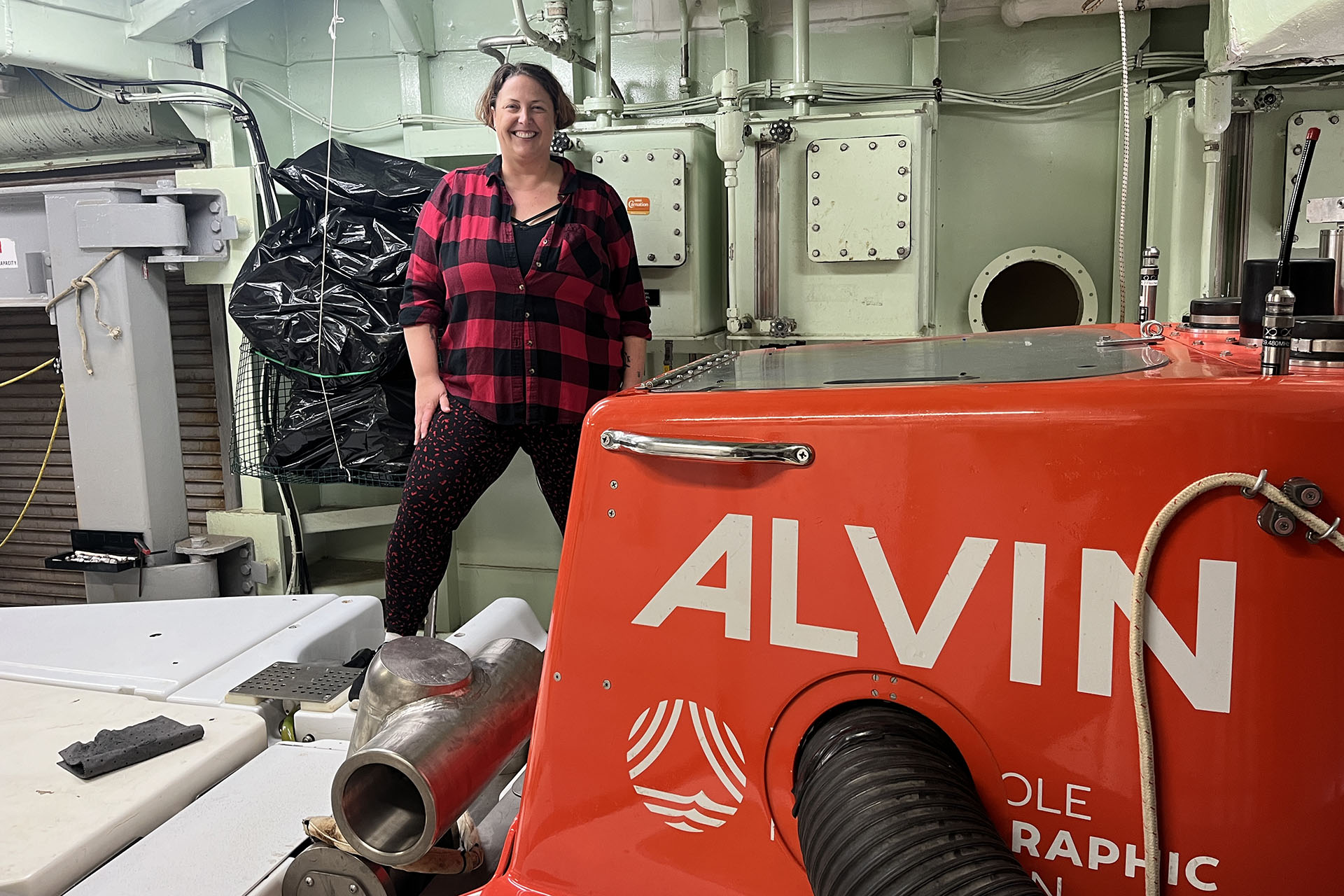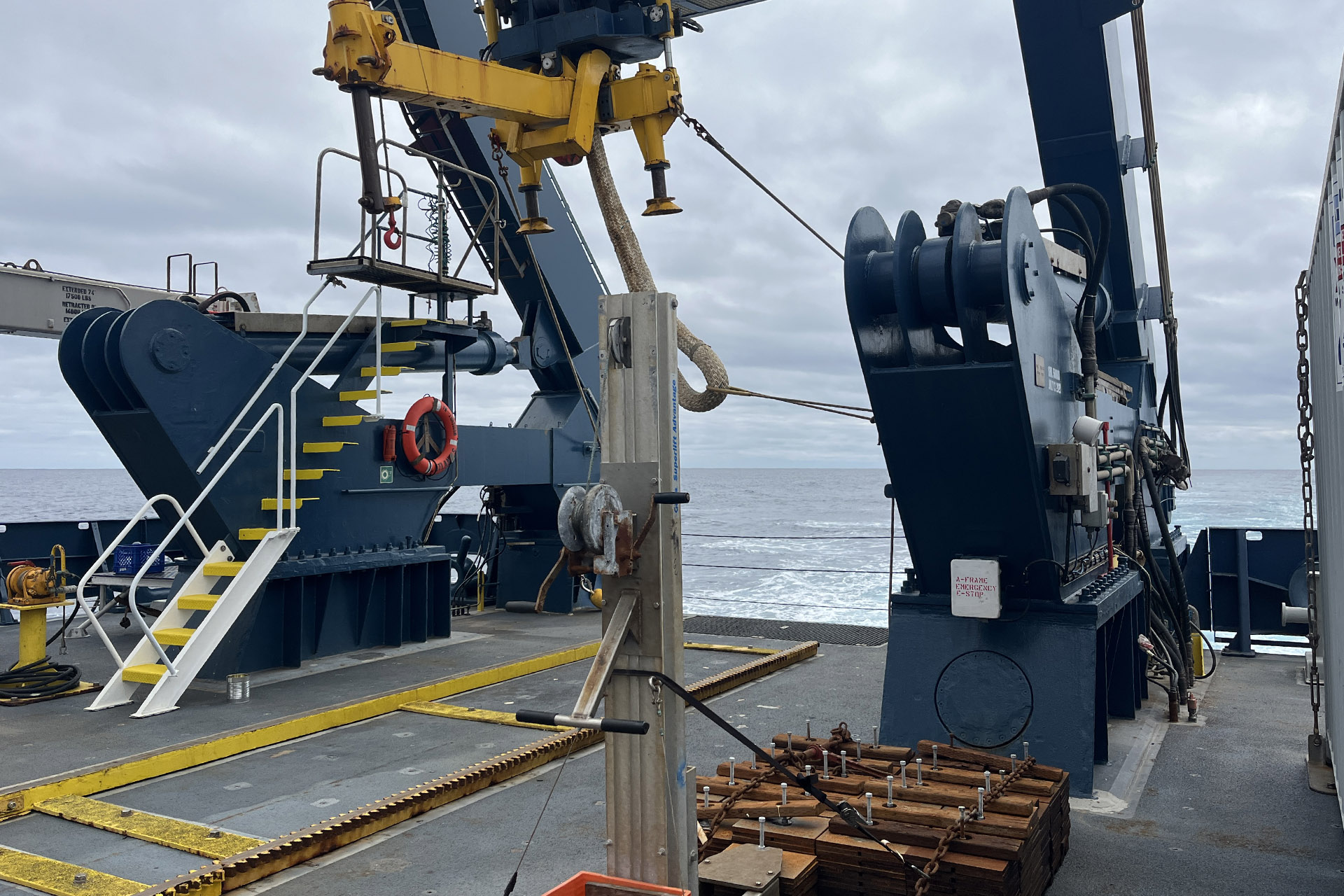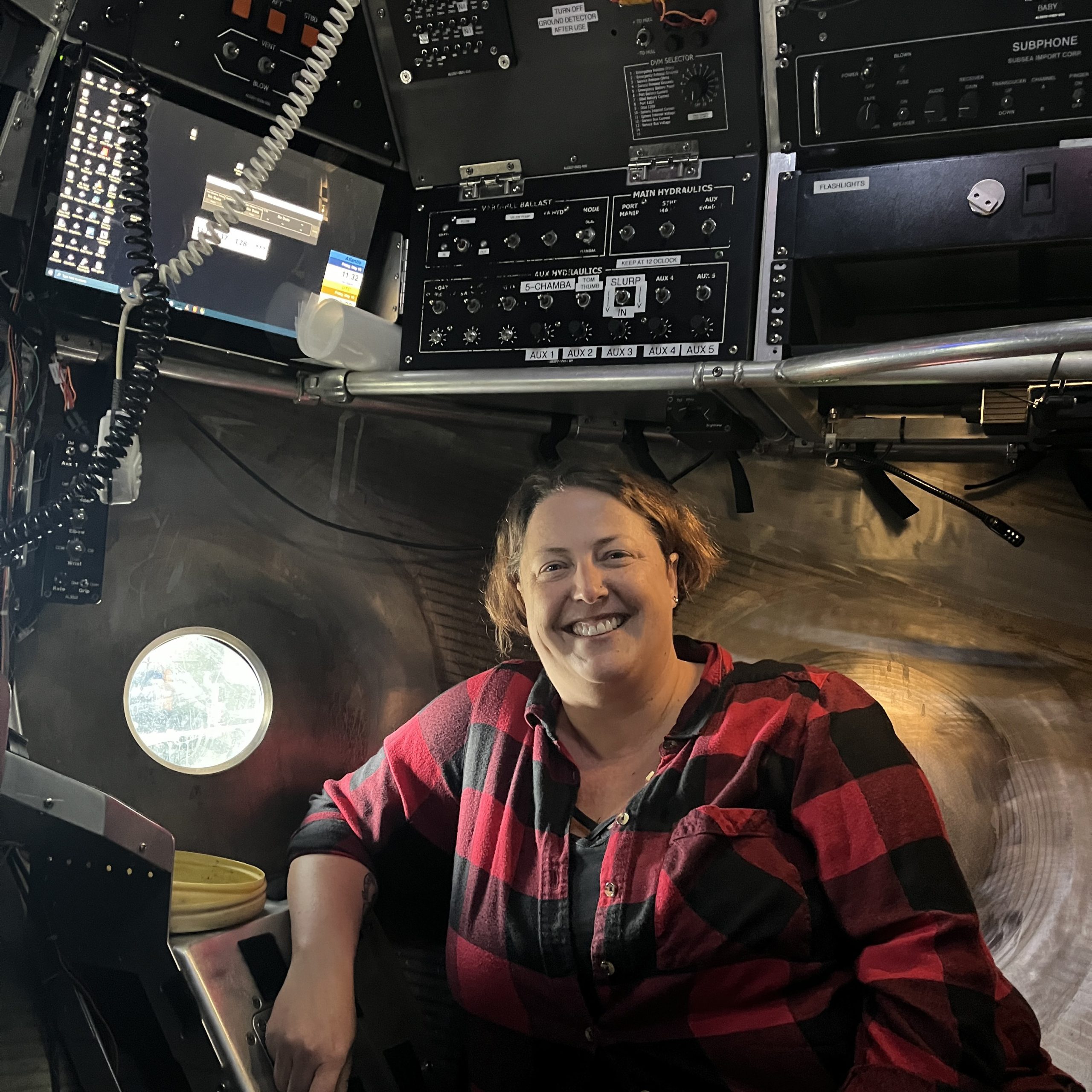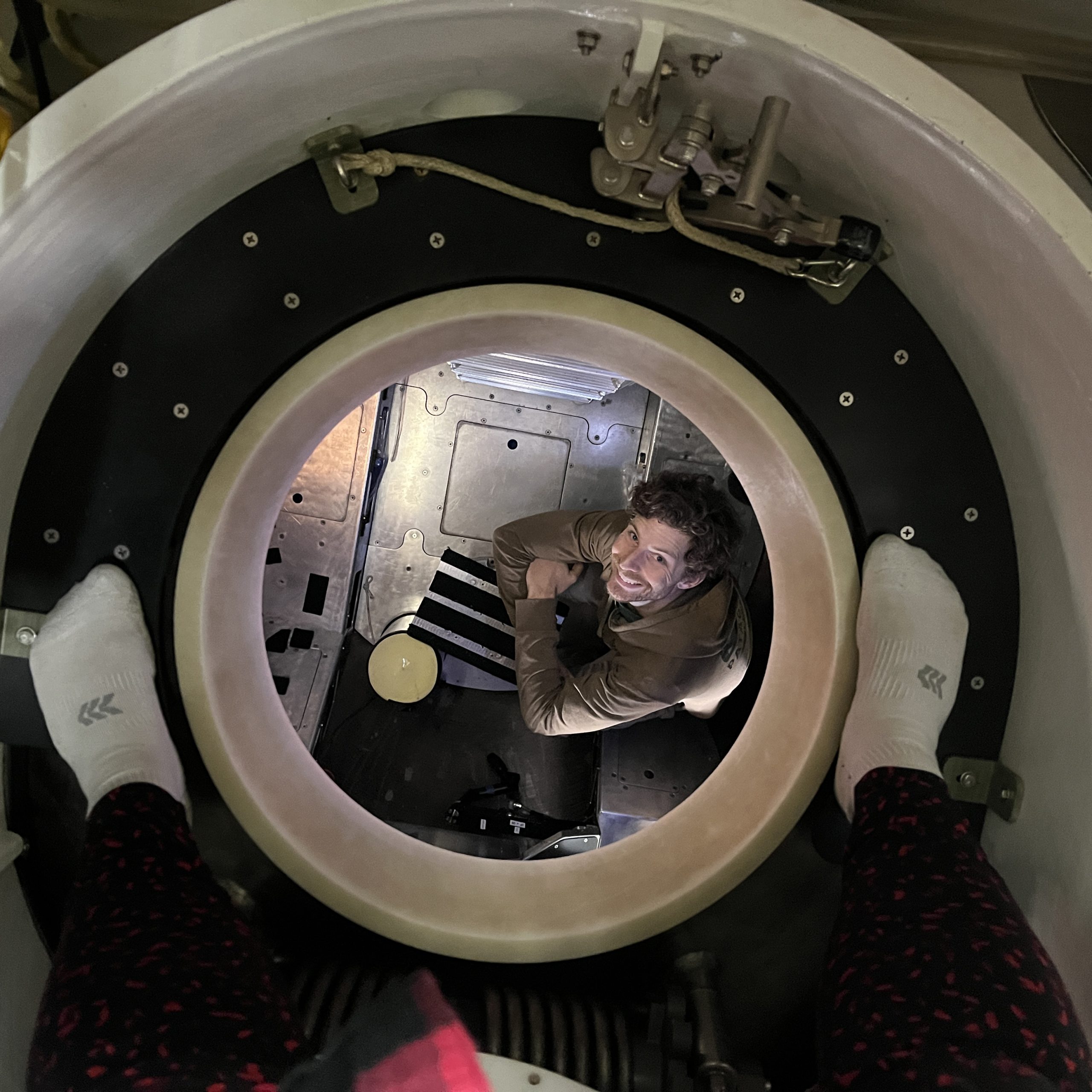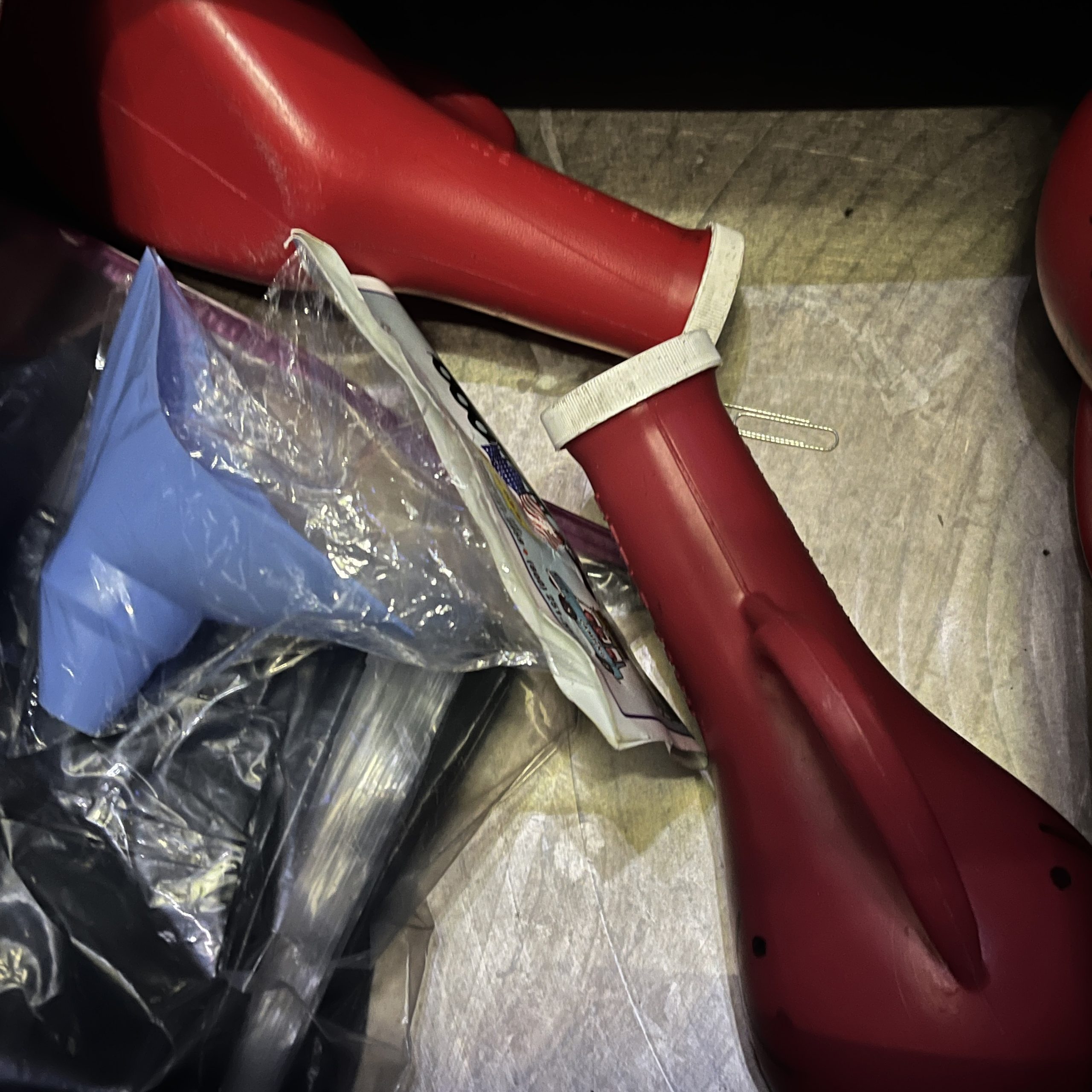Melissa meets Alvin
Melissa Miller gets to experience the wonders of the HOV Alvin
Today I got to tour Alvin, a submersible that lives aboard R/V Atlantis. Even though we’re not using it on the transit, there’s three WHOI engineers onboard getting it ready for the upcoming cruise. It’s an HOV (human-occupied vehicle) that can go as deep as 6,500 meters, which is four miles down.
Matt, one of the engineers was nice enough to give me a tour of Alvin, inside and out, and answer my many, many questions. Does it sit on the bottom or hover just above the seafloor? Where do you store all the science samples? How long does it take to train a pilot? What if you need to pee? He had answers for all of them, which we’ll get to.
Alvin is untethered to the ship. Atlantis is designed to deploy and recover the submersible, which means there’s many differences between the ship and the other similar research vessels I’ve been on before. R/V Revelle (SIO), Thompson (UW), and Brown (NOAA) are all sister ships of Atlantis, which means the labs, mess hall, etc is basically the same. But because Atlantis is set up for Alvin, the hangar, back deck, and A-frame are all very specific for safe deployments and recoveries of the vehicle. I’d love to see one in person someday. It also involves a small boat launch and swimmers to connect and disconnect various lines.
Three people can fit inside the 7-foot diameter sphere at the heart of the sub. The two of us climbed in (no shoes!) and it’s actually more spacious than I would have expected. There’s windows to look out of, as well as state of the art cameras that the scientists control with a touchscreen. A platform bolted to the front carries any baskets of sampling gear needed. Alvin can take core samples of the seafloor, pick up rocks, slurp up critters, collect seawater, and just about anything else you would want to study. It can sit on the seafloor to work or be ballasted just right to hover so as not to kick up sediment.
Matt is training to be a pilot and showed me how Alvin’s controls work. The basic controls of up, down, left, right, etc., are executed using a couple of joysticks. Then there are switches for everything from the hydraulics to changing the ballast during the dives. Oxygen tanks and carbon dioxide scrubbers ensure the air is breathable (for up to four days, just in case of an emergency). He had to learn morse code for basic communication with the ship. There is a walkie-talkie type system too, which uses sounds waves instead of radio. Matt said everyone onboard can hear it when they communicate that way.
Apparently ghost fishing nets and line are a threat to Alvin as well sea life. If it gets tangled in the props, Alvin could get stuck. The pilot can jetison many parts of the rig in case of emergencies, including the thrusters. Alvin descends and ascends through the water at about 30 meters per minute (about one mile per hour), so it takes hours just to get to the seafloor and back. Matt mentioned having picnics during that time, or taking a quick break on the seafloor to nosh on a PB&J.
Oh, and because everyone asks (including me), of course they’re prepared for bodily functions. Three people are in there for many hours, after all. There’s vomit bags, containers to pee into, and bags and toilet paper in case someone has to go #2 (which has apparently only happened seven times over the years). Fun fact!
If you would like to know more about Alvin, check out this webpage.

